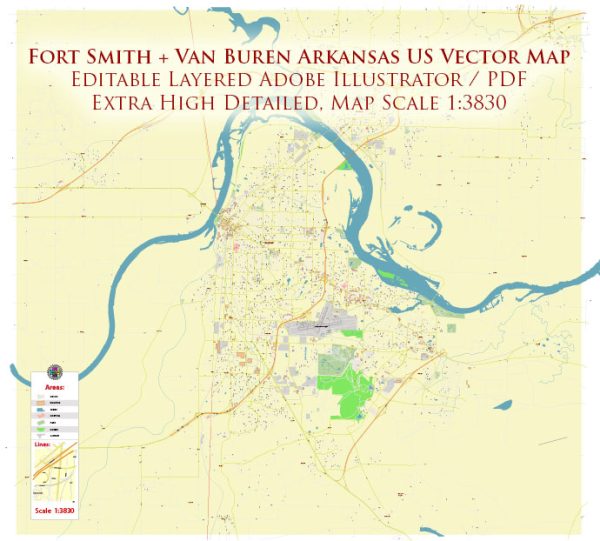Fort Smith and Van Buren, both located in Arkansas, have rich histories that reflect the broader patterns of urban development in the United States. While they are separate cities, they are often associated due to their proximity and interconnected histories.
Fort Smith:
- Military Origins: Fort Smith has its roots in the establishment of a frontier military post in 1817. It played a crucial role in the westward expansion and served as a key center for military operations during conflicts with Native American tribes.
- Trail of Tears: The city played a role in the tragic history of the Trail of Tears, as it was one of the departure points for the forced removal of Native American tribes, particularly the Cherokee, from their ancestral lands to the Indian Territory (present-day Oklahoma).
- Post-Civil War Development: After the Civil War, Fort Smith continued to evolve. It became a hub for trade, with a diverse economy that included agriculture, manufacturing, and transportation.
- Judge Parker and the Federal Court: Fort Smith gained notoriety for the jurisdiction of Judge Isaac C. Parker, known as the “Hanging Judge,” who held court in the late 19th century. The federal court in Fort Smith dealt with issues arising from the Indian Territory and contributed to the city’s law and order reputation.
- Transportation Hub: The city’s strategic location on the Arkansas River facilitated transportation and trade. The arrival of the railroad further boosted economic development.
Van Buren:
- Early Settlement: Van Buren, located on the opposite bank of the Arkansas River from Fort Smith, was originally a frontier town and played a role in the westward expansion.
- Transportation and Industry: Similar to Fort Smith, Van Buren thrived as a transportation hub. The completion of the railroad in the mid-19th century enhanced its role in trade and commerce. The city became a center for timber and manufacturing industries.
- Civil War Impact: Van Buren witnessed the impact of the Civil War, with battles and occupations affecting the city. The war had both short-term and long-term effects on its development.
- Economic Diversification: Over the years, Van Buren diversified its economy, with agriculture, manufacturing, and later, the service sector contributing to its growth.
Urban Development Patterns:
- Industrialization: Both Fort Smith and Van Buren experienced industrialization, with manufacturing and trade becoming integral to their economies.
- Transportation Networks: The Arkansas River and later the railroad were crucial factors in the urban development of these cities, facilitating the movement of goods and people.
- Cultural and Historical Preservation: Today, both cities boast historic districts and landmarks that showcase their unique histories. Efforts have been made to preserve and celebrate their cultural heritage.
- Economic Shifts: Like many cities in the U.S., Fort Smith and Van Buren have witnessed economic shifts over the years, adapting to changes in industries and economic trends.
In summary, Fort Smith and Van Buren, with their intertwined histories, reflect the broader trends of westward expansion, industrialization, and economic diversification that shaped urban development in the United States. The preservation of their historical and cultural heritage adds to the unique character of each city.


 Author: Kirill Shrayber, Ph.D.
Author: Kirill Shrayber, Ph.D.